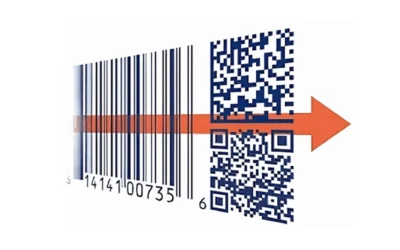While RFID tagging in the retail industry has been around since the mid-2000s, we’ve recently seen a shift in tagging not only apparel items but hard and home goods as well. We’ve also seen other retailers begin mandating that RFID tags be placed on certain merchandise. A report from McKinsey & Company highlighted a couple of reasons for the spike in use:
- Individual RFID tags have dropped to approximately $0.04.
- RFID readers have dropped by 50% compared to a decade ago.
- Modern RFID solutions improve inventory accuracy by 35%.
However, besides the benefits of managing and tracking your retail inventory, one of the simplest explanations for why retailers are adopting more RFID solutions is because the technology has become more advanced and accurate. This has made it more reliable in readability and range while allowing companies to leverage RFID software solutions to track and manage their inventory more efficiently.
For suppliers not already familiar with RFID technology, the transition might seem daunting. So to shed a little light on the solution, here are a few things you should know before adopting an RFID solution to meet compliance requirements from your retailers.
What You Need to Know Before Printing RFID Tags
RFID technology is much more accessible than it was ten years ago. As such, getting your hands on tags for your products is easier because there are many different ways to get them printed and encoded for your business needs. However, there are a few things you need to decide first.
First, you need to identify any RFID inlay specifications required by your retailers. Inlays consist of the RFID antenna and chip, which are then integrated into a label or hangtag. Found in a variety of designs and sizes, inlays are eventually programmed with unique electronic product code (EPCs) assigned to each physical object. It’s these EPCs – along with your inventory management software – that allows you to track and manage your products and goods.
To learn more about EPCs and how they’re formatted, click here to see how a service bureau like MSM Solutions prints RFID labels and hangtags.
Once you’ve selected your RFID labels or hangtags, you need to determine how to integrate RFID printing and encoding into your existing workflows. If you’re only concerned about tagging a small percentage of your product, you should consider generating RFID tags through a simple scan and print application as needed.
However, if you need to apply labels or hangtags to a large number or wide variety of products, you can integrate EPC printing and encoding with your existing ERP or WMS systems that drive your current universal product code (UPC) barcode printing applications.
Where to Print RFID Labels and Hangtags
The next step is determining the best option for printing and encoding your RFID labels and hangtags. Luckily, there are multiple options to choose from that allow you to print on demand:
- At the Manufacturing Center – Print tags at your manufacturing center as you need them. This helps you avoid overprinting, improves your management of EPCs, and lets you consolidate EPC and barcode data on a single label.
- At the Distribution Center – RFID tagging can be accomplished at existing value-added work stations and through scan and print applications at the item or case level.
- At a Service Bureau – Outsourcing your EPC labeling is often used by suppliers who do not own their own manufacturing.
To print RFID tags on your own, all you need is an RFID label printer from a provider like Zebra and a simple-to-use software solution like Bartender to assign EPCs.
How MSM Solutions Can Help You Meet Retailers’ RFID Requirements
As a GS1 U.S. Apparel and General Merchandise Initiative Solution Provider, MSM Solutions has provided RFID solutions to retailers, manufacturers, and suppliers for more than 10 years, including managing and operating the RFID tagging for two of the largest apparel companies in the world.
By providing a variety of RFID services like printing and encoding RFID tags, providing verification and validation, and performing custom software integration with various ERP and WMS systems, MSM Solutions makes it easy to meet the RFID requirements for all retailers.
We can also guide you through additional best practices that help your RFID solution integration bring more value to your operations like using mobile readers to verify accurate EPC data and tag encoding and identifying where additional RFID technology can benefit your internal operations.
By leveraging the features found in our industry-leading software solution, PortalTrack, you benefit from:
- Reduced operational costs
- Increased supply chain efficiency
- Improved cost of ownership
And with our complete turn-key support, you always have access to our best-in-class technical support whether you’re working in the manufacturing facility, distribution center, or retail location.
Don’t struggle with your RFID adoption efforts. Work with a partner that knows RFID, retail requirements, and GS1 standards. MSM Solutions has helped some of the world’s largest brands meet their own RFID retail mandates so contact us and let us help you meet any new RFID requirements.



